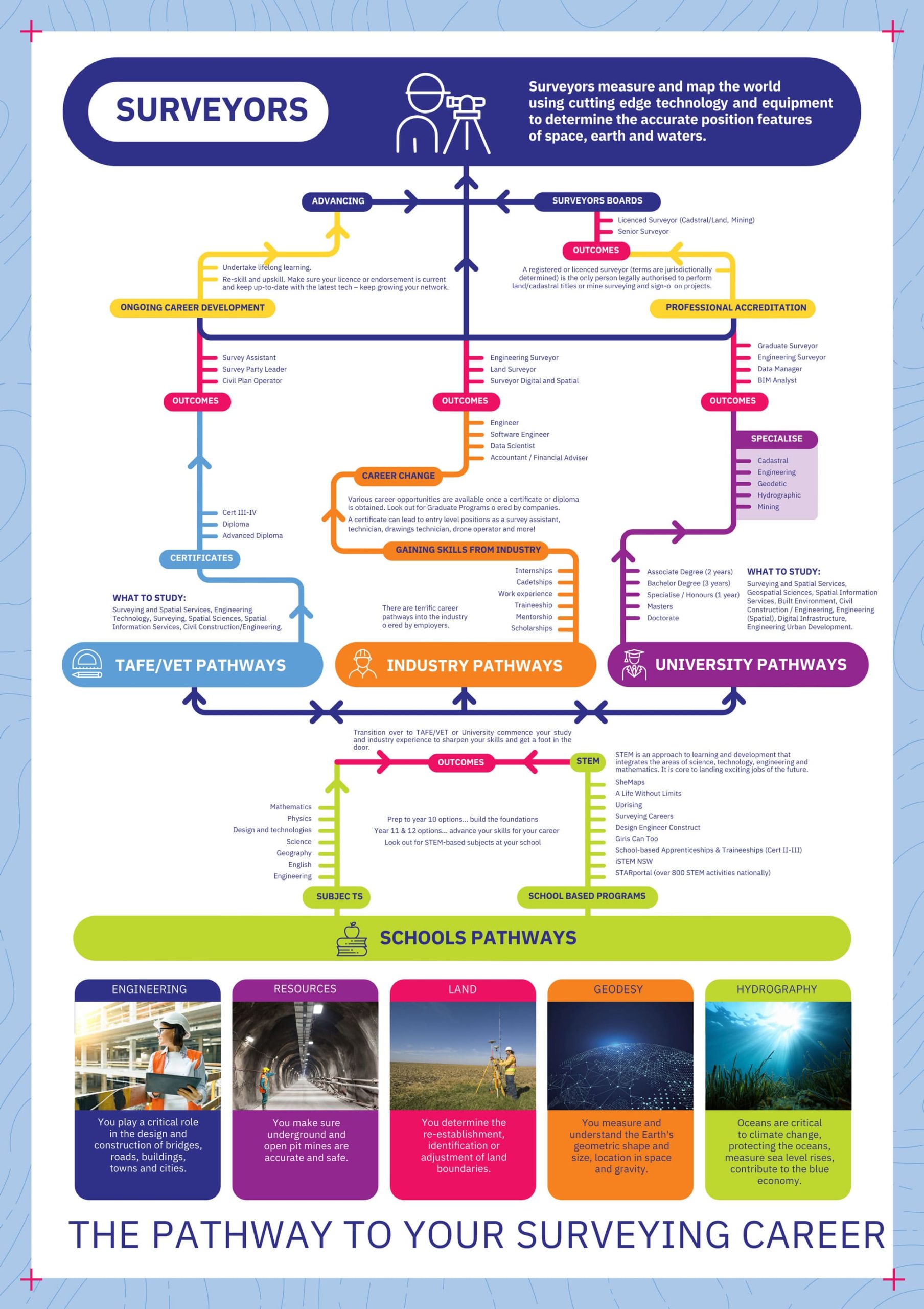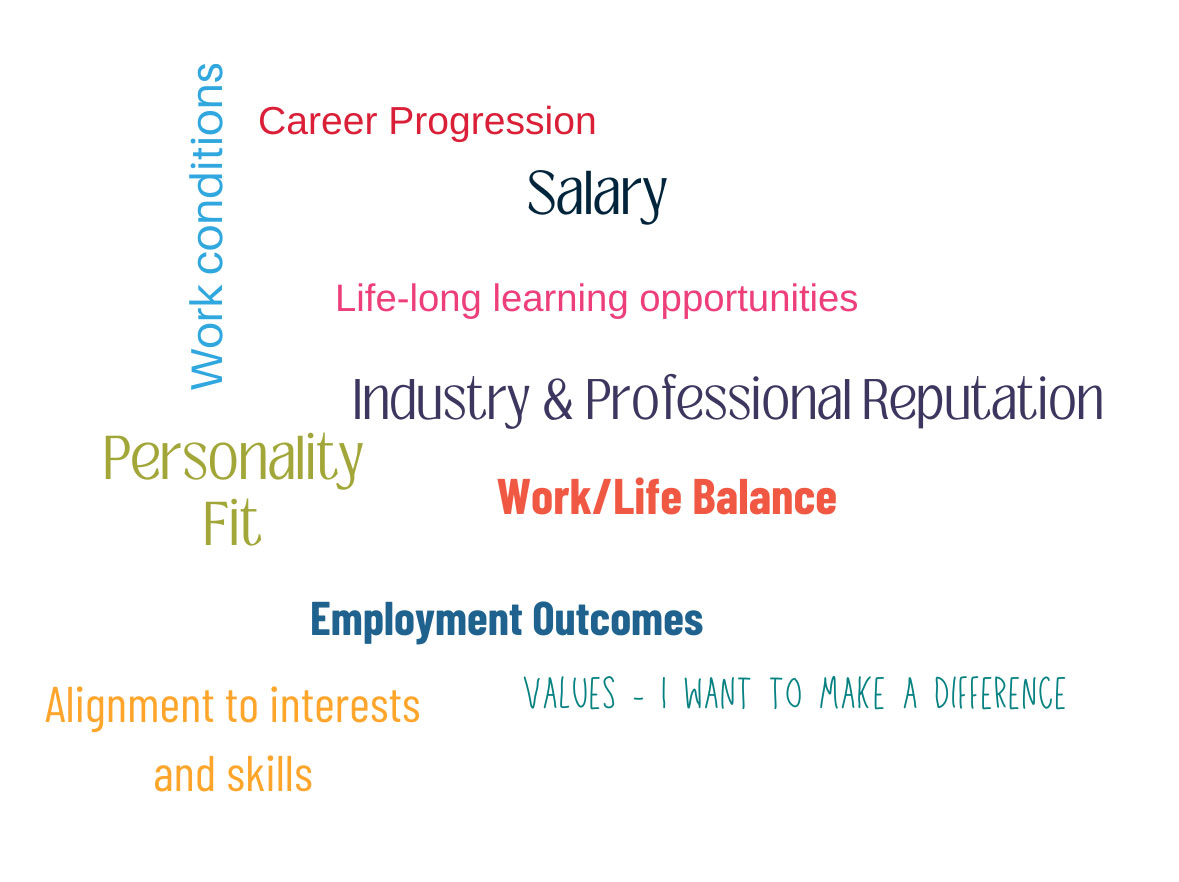Pathways into geospatial
Surveyors play a central role in shaping the world in which we live. It’s hard to find another career that allows you to facilitate change for the betterment of lives globally across so many disciplines.
Report: A national career pathway for surveyors. This paper was sponsored by The Surveyors Trust and details a project aimed at creating a national career pathway for Surveyors in Australia. The goal is to establish a clear and sustainable path to attract individuals to the Geospatial Industry and demonstrate how they can advance their careers, enhance their skills and knowledge and gain professional accreditation

Talent attraction strategies
At any time, but particularly in today’s competitive job market, it is essential for the geospatial industry to take a multi-prong approach to developing talent attraction strategies that appeals to diverse groups of people, from school students to career changers and return-to-work parents.
In this increasingly competitive environment for talent it is more critical to continually revise your talent attraction strategies. Here are some tips:

Understand the audience Understanding the audience is critical for developing effective talent attraction strategies. Below sets out some key considerations:
- Demographics: Consider the demographic characteristics of the target audience, such as age, gender, education level, and work experience. This information can help you tailor your messaging and outreach efforts to better resonate with your target audience.
- Psychographics: Consider the psychographic characteristics of the target audience, such as values, interests, and motivations. This information can help develop messaging and content that is more likely to engage the target audience.
- Communication preferences: Consider how the target audience prefers to receive information and communication. Some people may prefer email, while others may prefer social media or phone calls. Knowing this information can help develop communication strategies that are more effective.
- Employment needs: Consider the employment demands of the industry and the goals of the target audience. What is industry looking for? Where are the opportunities located? What types of jobs is the audience is looking for? What benefits are important to the audience?
-
What are their career aspirations? Understanding these needs can help shape compelling messaging and campaigns to strengthen visibility and support stronger engagement across communities.
- Industry knowledge: Promote the elements of the industry that would best resonate with the target audience. Understanding the trends, challenges, and opportunities across the industry can help shape messaging and content that speaks directly to the target audience’s interests and concerns.
Motivations When shaping your message to your target audience it helps to understand the motivations:
Students
Career transition
Industry
Shape your messaging to trigger a positive response based on the person’s interest



